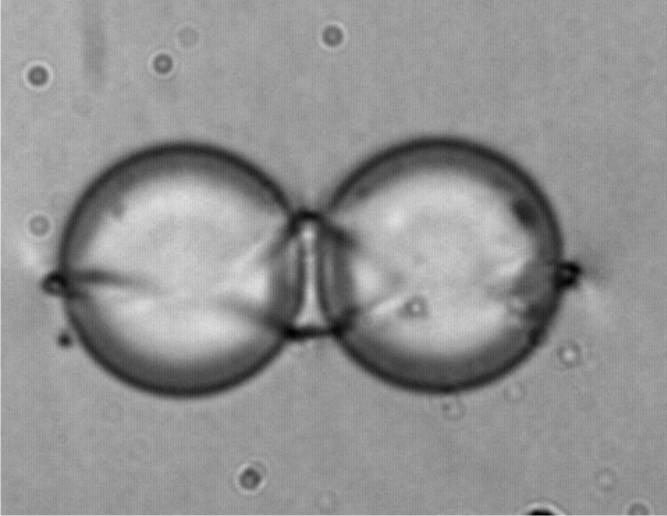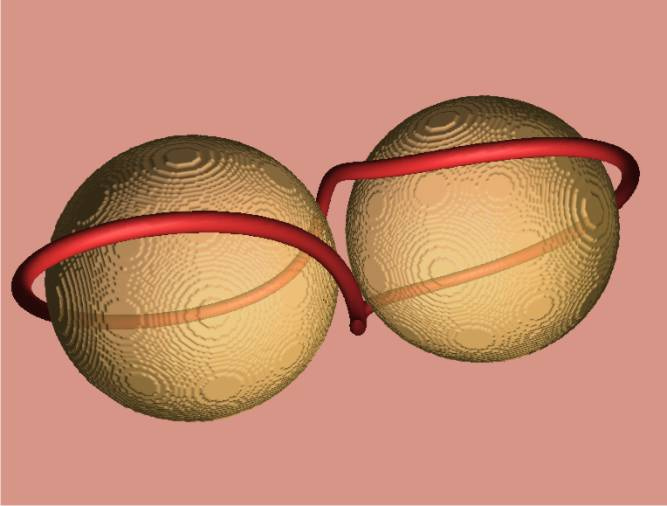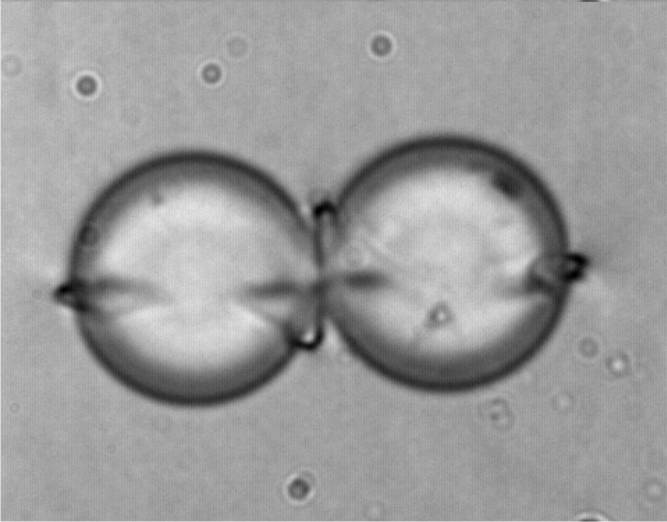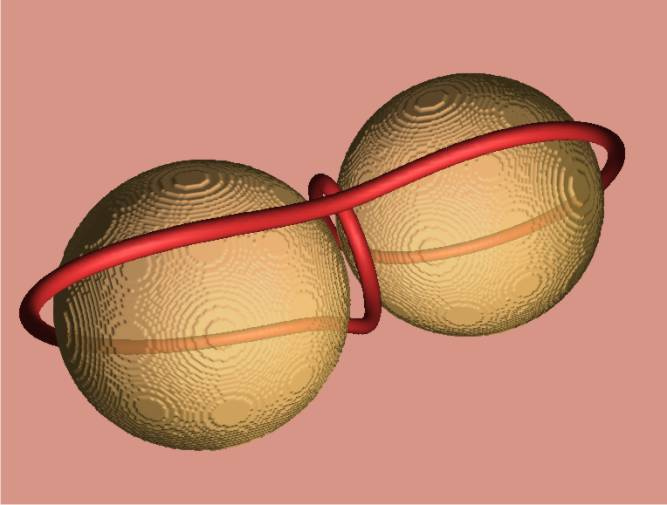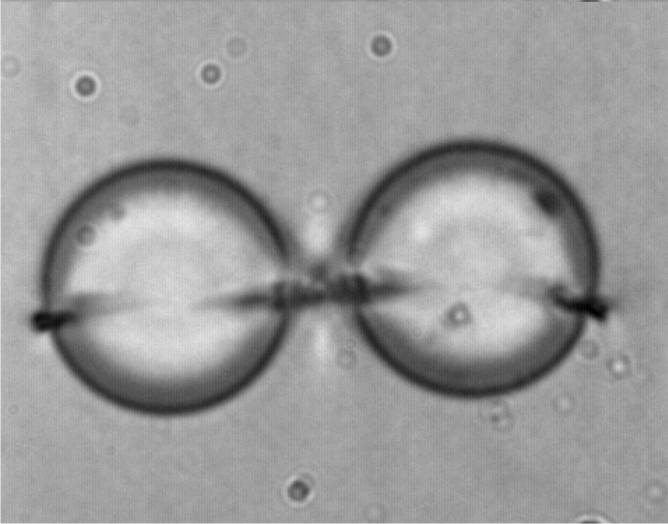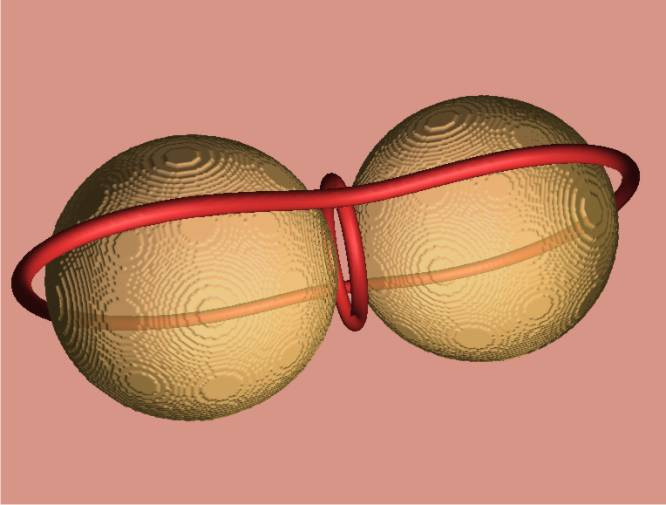Entangled nematic colloidal dimers and wires |
| It has been predicted, but never confirmed, that colloidal particles in a nematic liquid crystal could be self-assembled by delocalized topological defects and entangled disclinations. Here we show experimentally and theoretically, that colloidal dimers and wires can be assembled by entangled topological loops of the nematic orientational field. We have found that the colloidal entanglement proceeds exclusively via locally thermally quenching a thin layer of the nematic liquid crystal around selected colloidal particles, which explains why the entanglement has not been observed before. Three linear entangled defect structures have been found experimentally, which are topologically equivalent, but differ in the way of binding and in the particle separation. In all cases, the entanglement provides ten thousand times stronger binding compared to water-based colloids. |
| Entangled colloidal pairs viewed under a non-polarizing optical microscope – the disclination loops are visible due to the scattering of light. From left-to-right the “figure of eight”, “figure of omega” and “entangled hyperbolic defect structure” are presented. |
| The strength of the entanglement was measured by switching-on two separated light traps and grabbing two 4.7 µm particles at their opposite sides. The entangled pair was stretched by moving both traps in the opposite direction to a predetermined position, and then the trap was switched off. The movie below shows, that the entangled defect loop acts as an elastic string, pulling both colloidal particles together. |
MOVIE: Straching of two entangeled colloids. | The colloidal wire (up) is made of a chiral sequence of figure of eight loops and resembles a simple chiral braid, where two sides of a single connected defect line are winding along the colloidal particles. The second wire (down) is nonchiral and is formed by a series of entangled hyperbolic defects. |
The entanglement is not necessarily limited only to colloidal pairs, but can extend over many colloidal particles, forming colloidal wires. Figures below show colloidal wires, assembled by laser manipulation and thermal quenching. |
There are two important aspects of our work. First, we observe an interesting signature of the formation of entangled topological defects, as they can be created nearly exclusively by quenching from the isotropic phase. Whereas the conservation of the topological charge assures that in our system the topological charge of defect loops is equal to the number of colloidal particles, it does not prescribe the nature of the loops. Second, the observed strong binding of colloidal particles opens new routes to possible applications. We consider that by proper selection of materials, one could assemble closely spaced microresonator optical waveguides, which could transport light around sharp corners and kinks. |
RAVNIK, Miha, ŠKARABOT, Miha, ŽUMER, Slobodan, TKALEC, Uroš, POBERAJ, Igor, BABIČ, Dušan, OSTERMAN, Natan, MUŠEVIČ, Igor. |


